Motorola Moto G Review
by Brian Klug on December 18, 2013 2:00 PM EST- Posted in
- Smartphones
- Motorola
- Mobile
- *VA
- Cortex A7
- snapdragon 400
- Moto G
Display on mobile devices is one area where we’ve seen considerable improvement. Pixel density has gone up, contrast ratios have improved, and the emphasis on low power in a platform gated by its battery size means there’s always innovation happening. In the case of the Moto G, what we’re after should really be a display that looks visually appealing without any of the egregious issues that plague most midrange devices – poor viewing angles, low resolution, low contrast, dim displays.
On paper, the Moto G has what would probably have been a flagship display for a mobile device a year or two ago, it’s a 4.5-inch LCD with 1280x720 resolution and 326 PPI pixel density. The comparison point is the Moto X with a 4.7 inch AMOLED panel of the same 720p resolution and 312 PPI pixel density.
I’m pretty impressed with how the Moto G’s display looks. Subjectively, viewing angles are good, there aren’t any of the issues I normally attribute to non-flagship devices either with low pixel density or contrast that fails to please. There’s no light leakage at all from any of the corners.
One unfortunate thing about the Moto G I was sampled however is the presence of two small bubbles in the cover glass. I initially thought these were dust, but inspection with a microscope reveals they are in fact inhomogeneities in the cover glass.
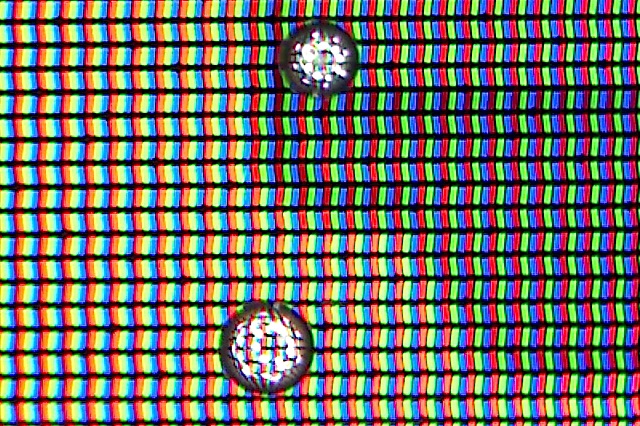
I’m not sure whether these kind of defects are within spec for the Moto G, but they’re distracting and visible on most solid colored UIs or views. I’ve never seen something like this on any handset I’ve reviewed to date.

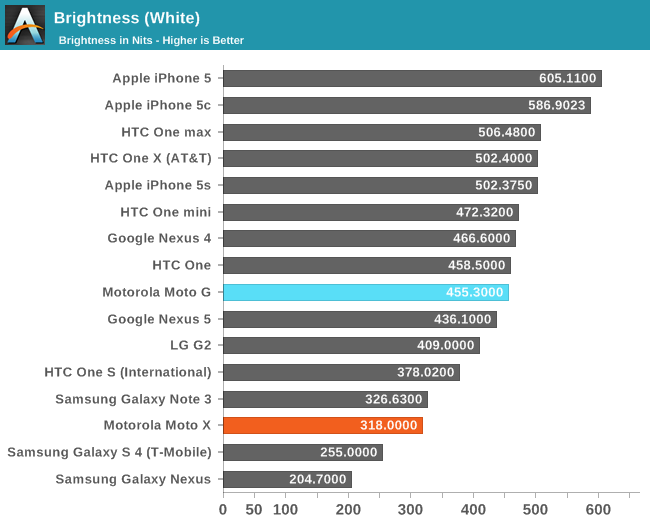

The Moto G goes plenty bright, at just over 455 nits, and delivers contrast numbers that are pretty darn good for the price point at just shy of 1200. Normally black levels are out of control on the lower end devices, I’m not sure if the Moto G uses an IPS panel, but suspect it does.
Upon inspection I immediately noticed that the Moto G display was very, very blue. To measure color accuracy we turn to the same combination of measures that we have used for a while now.
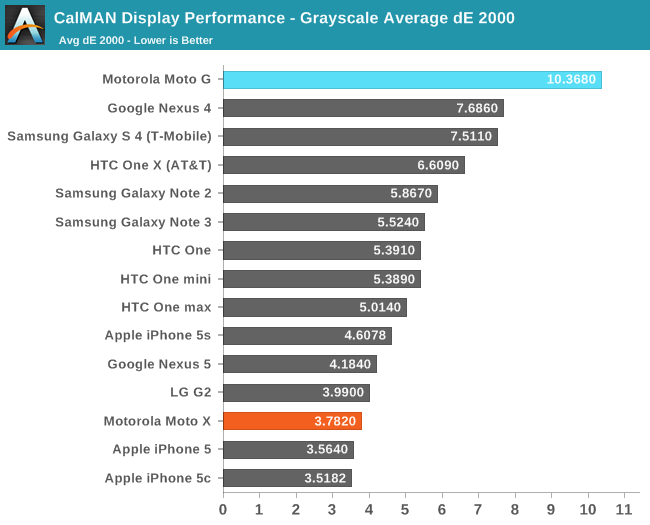
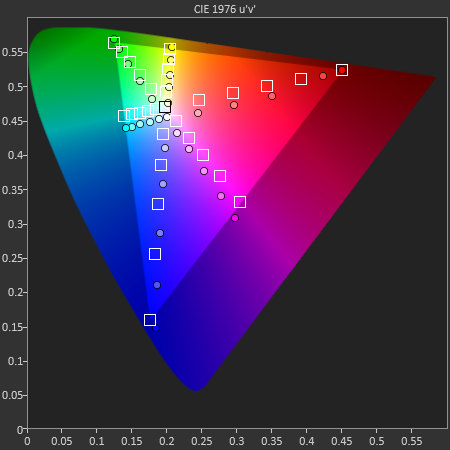



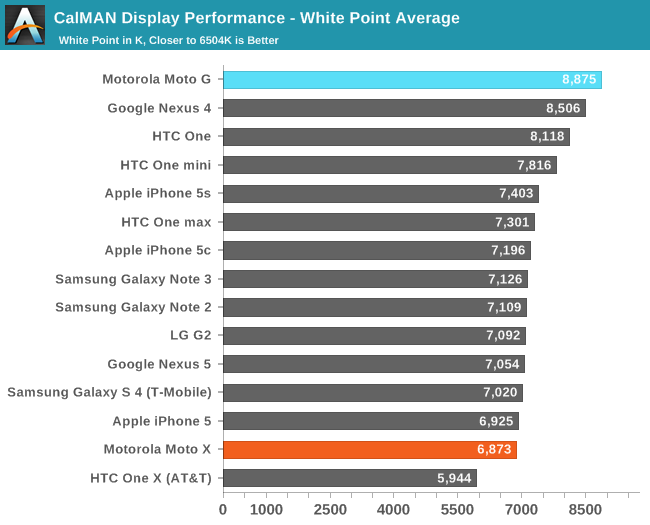
My comparison points are unfortunately primarily high end devices, which makes the Moto G look comparatively poor. The Moto G display tuning is indeed very blue with a white point of nearly 9000K, but I wouldn’t be surprised to learn this is a function of the backlight LEDs used or intrinsic properties of the panel.
Color calibration is something we’ve only just now started to see get taken seriously on the high end devices, if we can’t expect it to be a regular staple there, the midrange is obviously a lost cause. I wouldn’t fault the Moto G for not being very accurate, but it is something to be aware of as a sacrifice at this price point if you’re considering it over a high-end phone. On the flipside, the pixel density and contrast of the Moto G’s display seems excellent given the price, and I suspect the defects in my Moto G’s cover glass are specific to this unit.



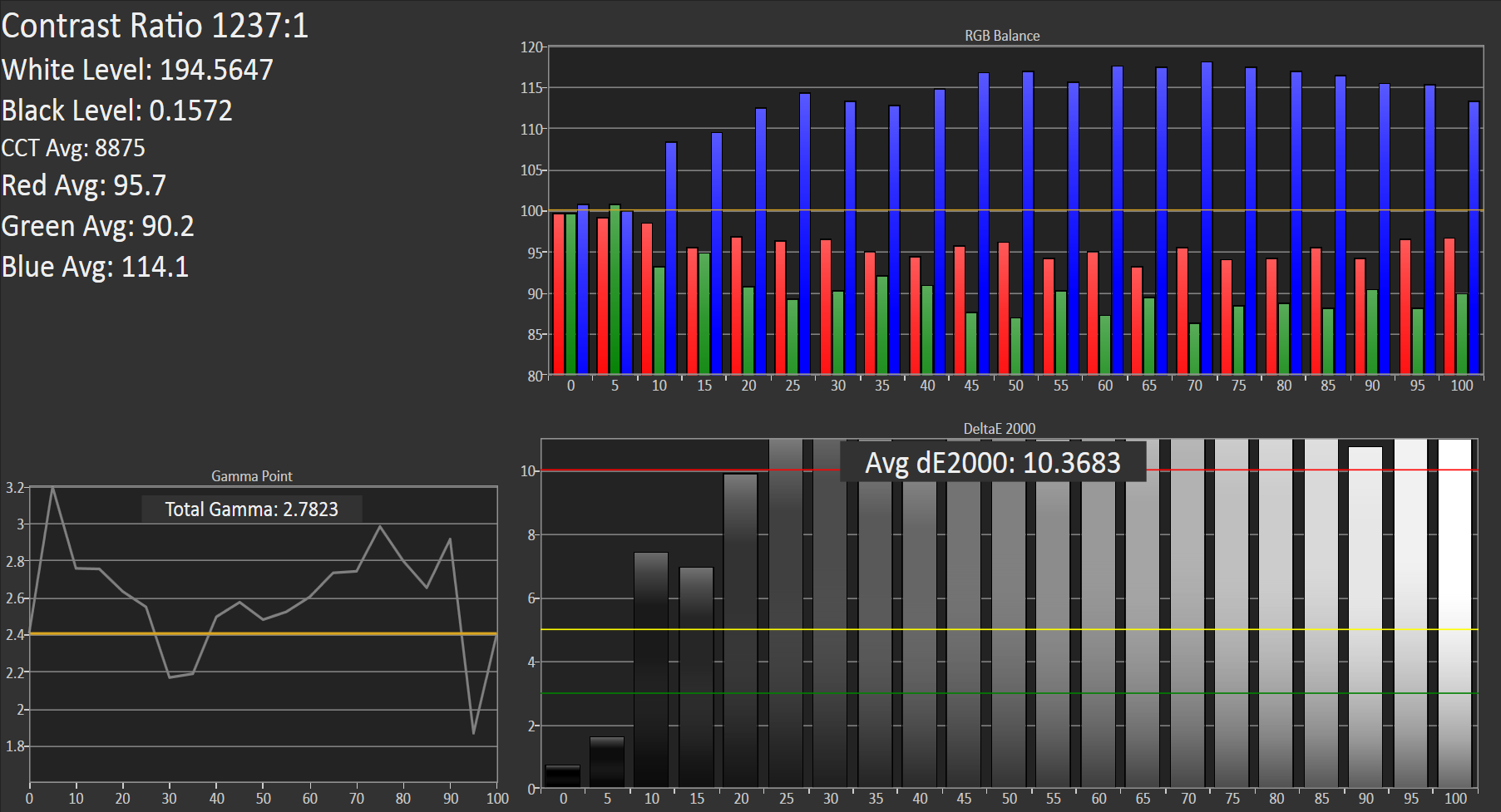








120 Comments
View All Comments
sprockkets - Thursday, December 19, 2013 - link
And that was a red herring. Did you even read the part where Google themselves updated it past 18 months with 4.3?Or would you think them saying "We can't update it because TI no longer has their OMAP team" would make sense to anyone?
Baser - Thursday, December 19, 2013 - link
I don't think that you know what a red herring is.sprockkets - Thursday, December 19, 2013 - link
I absolutely do.Nagorak - Tuesday, December 24, 2013 - link
You're not using the term correctly.boeush - Wednesday, December 18, 2013 - link
After being stuck and miserable with a buggy and heavily skinned version of 2.3.4 on my Motorola Droid X2 for 2 years, that's why I finally went for the Nexus 5 this time around (and no more 2-year contracts, either...) I've sworn to never buy another Motorola POS ever again, but I might reconsider if Google's ownership results in major changes... (so far, I'm not seeing that yet)Hakuron - Saturday, December 21, 2013 - link
You haven't seen major changes? Well sir you need a couple of new glasses.Moto x is only device which actually cares about user experience, making life easier for their owners with its unique features.
Moto g is TOTALLY a game changing device (worldwide) due its amazing price-quality relationship.
Same goes for the updates, motorola has got 5 devices on 4.4 while other manufacturers haven't even got it yet for their flagship.
darwinosx - Wednesday, December 18, 2013 - link
If you care about updates, don't get anything besides an iPhone. Simple as that.ESC2000 - Monday, December 30, 2013 - link
Yeah but then you have to use an iphoneStuka87 - Thursday, December 19, 2013 - link
The only phone maker with long term update support is Apple. On the Android side you are still lucky to get *A* update with most phones. The Nexus will get you the most, but not anywhere close to what Apple offers in terms of hardware support (Currently 3 generations back for iOS7).sprockkets - Wednesday, December 18, 2013 - link
Moto X is already on 4.4, before even the Nexus 4.This isn't your old Motorola here.
Oh and btw, the current and former generation of Droids are all getting 4.4.